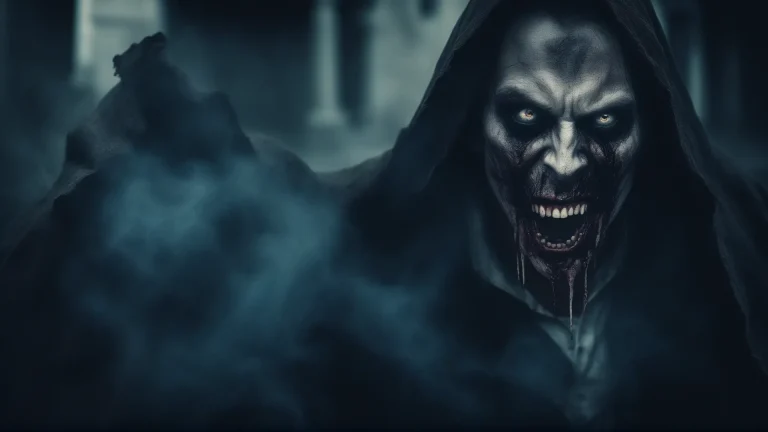The world of horror cinema has given us some of the most unforgettable and terrifying characters, sparking endless discussions among fans about who deserves the crown in the iconic horror villain debate. From silent, hulking monsters to cunning, charismatic killers, these villains have left an indelible mark on pop culture, haunting our nightmares and shaping the genre. This article dives into the heart of the debate, examining what makes a horror villain iconic, comparing some of the most legendary figures, and exploring why these characters continue to captivate audiences. Whether you’re Team Freddy, Team Jason, or rooting for a more supernatural terror like Pennywise, the question remains: who is the ultimate horror villain?
Defining Iconic: What Makes a Horror Villain Legendary?
An iconic horror villain transcends their film, becoming a cultural touchstone that resonates beyond the screen. It’s not just about body count or jump scares; it’s about presence, personality, and lasting impact. Take Freddy Krueger, for instance—his burned face, razor glove, and twisted humor make him instantly recognizable. His ability to invade dreams in A Nightmare on Elm Street taps into a universal fear, making him more than just a slasher. Similarly, Jason Voorhees from Friday the 13th embodies relentless, unstoppable dread with his hockey mask and machete. Iconicity also comes from cultural staying power—villains like Dracula or the Creature from the Black Lagoon have been reimagined across decades, proving their timeless terror. A villain’s design, backstory, and ability to evoke primal fears all contribute to their legendary status.
The Contenders: A Rogues’ Gallery of Horror
The iconic horror villain debate often boils down to a few standout names, each with their own claim to the throne. Freddy Krueger, created by Wes Craven, brings a psychological edge, blending horror with dark wit as he stalks victims in their dreams. Jason Voorhees, his silent counterpart, is the embodiment of brute force, a near-invincible killer whose simplicity makes him terrifying. Michael Myers from Halloween offers a chilling blankness—his expressionless mask and motiveless malice make him an enigma. Then there’s Pennywise, the shape-shifting entity from Stephen King’s It, whose clown facade preys on childhood fears. Each villain represents a different flavor of horror: psychological, physical, or supernatural, fueling endless arguments about who’s the most terrifying.
Also Visit: gimmit
Freddy vs. Jason: The Slasher Showdown
No iconic horror villain debate is complete without pitting Freddy Krueger against Jason Voorhees, a rivalry so legendary it spawned a 2003 crossover film. Freddy’s strength lies in his cunning and creativity—his dreamworld kills are as theatrical as they are brutal, from turning victims into puppets to drowning them in their own blood. Jason, however, is a force of nature, his sheer physicality and refusal to die making him a relentless threat. Fans argue Freddy’s intelligence gives him an edge, while Jason’s raw power and resilience make him unbeatable. The debate often hinges on style: do you prefer Freddy’s psychological torment or Jason’s straightforward slaughter? Their contrasting approaches highlight the diversity of horror villains, each appealing to different fears.
The Silent Menace: Michael Myers and the Power of Mystery
Michael Myers, often called “The Shape,” brings a different energy to the iconic horror villain debate. Unlike Freddy’s chatter or Jason’s brute force, Michael’s terror lies in his silence and lack of motive. Introduced in John Carpenter’s Halloween, his white mask and slow, deliberate movements create an almost supernatural aura. He’s not driven by revenge or a cursed backstory—just an inexplicable need to kill. This ambiguity makes him uniquely unsettling, as fans debate whether he’s human, evil incarnate, or something else entirely. His simplicity and refusal to explain himself keep him relevant, with modern sequels still exploring his enigmatic presence.
Also Visit: ginkit
Pennywise and the Supernatural Threat
Pennywise, the dancing clown from It, adds a cosmic dimension to the iconic horror villain debate. Unlike slashers, Pennywise is an ancient entity that feeds on fear, particularly children’s. Its ability to shape-shift and exploit personal phobias makes it a versatile and deeply personal terror. Tim Curry’s 1990 portrayal and Bill Skarsgård’s 2017 version both capture its eerie charisma, blending charm with malevolence. Fans argue Pennywise’s supernatural nature gives it an unfair advantage over human killers like Michael or Jason, but others say its reliance on fear makes it less universally terrifying. Its ability to evolve with each generation keeps it a strong contender in the debate.
Cultural Impact and Legacy
The iconic horror villain debate isn’t just about who’s scariest—it’s about who leaves the biggest mark. Dracula, one of the earliest horror villains, set the template for cinematic monsters, with Bela Lugosi’s 1931 performance still iconic. Modern villains like Ghostface from Scream brought meta-humor to the genre, reflecting horror’s evolution. These characters influence everything from Halloween costumes to memes, proving their cultural weight. Freddy and Jason, for instance, have starred in countless sequels, comics, and games, while Pennywise’s balloon has become a shorthand for horror. Their ability to adapt and endure ensures they remain central to the debate, as new generations discover their terror.
Why the Debate Endures
The iconic horror villain debate thrives because horror is personal. What terrifies one person—Freddy’s dream invasions—might not faze another, who finds Michael’s relentless pursuit more chilling. These villains tap into universal fears: death, the unknown, or losing control. They also evolve with society, reflecting anxieties of their time, from Cold War-era monsters to modern psychological horrors. Fan discussions, fueled by conventions, podcasts, and online forums, keep the debate alive, with each generation adding new perspectives. Ultimately, there’s no single winner—each villain’s unique terror ensures they all have a place in horror’s pantheon, haunting us for years to come.
Also Visit:
